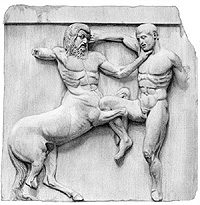Below is a not quite “Magnificent” Seven. The convicted felons, two with death sentences hanging over their heads, one black, four Irish, to repeated goalbreakers made common cause against their goaler even though it seems that the first man, the “bruiser” Nailing had previously beaten two of these men. Much is left unsaid and unknown about these men. It is known that two of them were the property of slaveholders. Two were suspected of being escaped servants. The status of the others is unclear, probably being that they were former servants who had served their time and had taken up a life of crime after release. It is probable that Nailing was released early from his term just to be rid of such a troublesome character of obviously dangerous nature.
Gaol was the Middle English term for jail. With the significance of goals in American ball sports like lacrosse, hockey, football and soccer, the reader is left wondering if there is an etymological link. The prevalence of jailbreaks and the out of town nature of many of the servants listed in Maryland gaol escapes, indicates that its position on the Chesapeake Bay made Baltimore both a likely place to deposit runaways as well as a likely start point for teams of goalbreakers making their way to freedom. The implied history of one of the escapees listed in the ad below indicates that the smuggling of servants was an ongoing enterprise along the Chesapeake.
October 5, 1769
The Pennsylvania Gazette
Baltimore Town, September 18, 1769.
FORTY POUNDS Reward.
BROKE gaol last night, about eleven o, the following prisoners, viz.
JOHN NAILING, a tall thin faced square set young fellow, about 20 years of age, born in Ireland, and imported from Dublin, [1] speaks much on the brogue, is remarkably talkative, addicted to drinking and swearing, brags much of his manhood and is a great bruiser; this was the fourth time of his being committed to goal in one year that he has been in the country.
WILLIAM STALING, a well set man, about 5 feet 8 inches high, by trade a leather breeches maker, born in Ireland, and about 30 years of age, both his eyes have lately been bruised in fighting, and one of them very blood shotten, he has a very ill look, and at present appears very sickly. [2]
JOHN STINSON, who say he was born in Pennsylvania, near Schuylkill, [3] about 5 feet 10 inches high, a portly well set man, wears his own black hair, tied behind, has a down look, goggle eyes, thick lips, and a mole on one cheek; he has a wound on the back of his left hand, by which he has lost the use of one finger; he is a notorious horse thief and house breaker, has twice been tried for his life in Virginia, under the name of SHEPHERD, but constantly broke gaol; [4] he has with him, a light coloured Wilton coat, without lining, also a green saggathy coat, and leather breeches.
JOHN DOUGLAS, born in Ireland, about 6 feet high, stoops much in his shoulders, has sore eyes, he was detected in carrying servants from this town to Virginia, he speaks a little on the brogue, and is very drunken and talkative, he chiefly goes by water, [5] and says he lived in Norfolk.
ROBERT COALE, a Negroe, who pretends to be a freeman, but is the property of David Chevis, of Carolina County, Virginia, whose house and property he destroyed by fire, in April, 1767, for which he was sentenced to die. He broke goal, and was afterwards confined in Port Tobacco goal, from whence he also escaped, and came to Baltimore, where he continued near two years working as a labourer to Masons, before he was committed to this goal, he has a certificate of his freedom, signed by a certain Tomkins, who broke goal with him, [6] in Charles county; he is about 26 years of age, of a good countenance is a very civil handy fellow, can wait at table, and plays the fiddle with his left hand, has a remarkable large foot, he has been some time in irons, and may still carry the marks of them, he has several suits of cloaths, particularly a brown broadcloth suit, a black ditto, with sundry fine white linen shirts, &c.
RICHARD WHEELER, was born in this county, [7] about 25 years of age, a tall thin young man, he has a very down cast look, and has been in goal near 14 months, much pitted with the small pox, which he has had not long since.
THOMAS ELTON, a servant of Mr. Rutland near Annapolis, a short square set man, he is a very sober orderly fellow, had on a blue ragged coat, old shirt, and leather breeches, which are very old and too short for him, without shoes or stockings, one of his eyes appears much bruised by fighting, by trade a Farmer, [8] and has a very pale countenance, thick faced.
As many of them have been long confined, they appear pale, and their skins tender, tho'they are tolerable well in Flesh, [9] their cloathing is uncertain, as many of them had scarce any, and most of them barefooted. [10]
Whoever secures and brings back said prisoners, shall have Forty Pounds reward for the whole, or Five Pounds for each, paid by DANIEL CHAMIER, Sheriff of Baltimore County.
Notes
1. Nailing had been in country for one year of a minimal three-year-term and was now not apparently owned and had been committed to jail four times. This system seemed incapable of dealing with such aggressive types. We could expect him to be hanged or drift to the frontier/
2. Staling exemplifies the elderly [at age 30] released servant, an essentially homeless laborer in poor health. It was cheaper to buy a transport for 3-7 years then pay day wages. Only the very best servants were retained as wage laborers or on piecework and for harvest and sowing, with the less productive servants released with the clothes on their back to fare as they will on the seasonal job market.
3. Stinson is expected to be a runaway, perhaps from the Quarantine station at the mouth of the Schuylkill River were transported youth were left before sale in Philadelphia so that the most sick might pass away without infecting citizens.
4. Note that the origin of the death penalty for horse stealing is not, as commonly thought, the survival value of a horse in the Far West of a later period, but because it was an expensive asset owned by the elite and was also a crucial ingredient in a successful escape. In England, at this time, over 100 crimes carried the death penalty. These death penalties were only retained in plantation America to the extent that they were necessary in assuring the continuation od slavery.
5. Douglas was a servant smuggler who operate via boat, shuttling escaped slaves between the Pennsylvania, Delaware, Maryland and Virginia shores of the Chesapeake Bay. This was the means by which half white slave Frederick Douglas would first attempt to escape in the 1830s.
6. In the 1700s, numerous documented conspiracies to rebel between black and white servants were noted as were numerous accounts of whites—mostly Irish—aiding lacks in escaping bondage. A common gambit was to pose as master and servant, which aided the lone white man, who, without a servant attending him, would be expected of being a runaway. Both Frederick Douglas and Moses Roper were mixed-race slaves who were aided in their escape by poor whites. Nat Turner recognized this when he ordered his rebels to leave the poor whites alone during their massacre of their masters.
7. Wheeler is an enigma, an apparent native-born man of Irish descent kept in a facility usually devoted to housing runaways for an extensive period. Had he been an escaped apprentice his trade would be noted or he would have been returned. He may have simply been guilty of vagrancy or homelessness, awaiting someone to redeem him as a servant, which would be unlikely considering his poor health.
8. Elton is a known escaped servant with a useful trade, a typical runaway, probably of less than 21 years.
9. Flesh denoted that the person was not so thin that one could see their ribs. Note that people like Wheeler would have run-up a goal debt for being fed for so long and the goaler would be looking to sell him for about 7-10 pounds. Such listings are extant, where vagrant Irish had simply been picked up without freedom papers and held for sale by a goaler.
10. A runaway of the 18th Century was typically half naked, shoeless and possessed of no money or tools.
America in Chains











I saw this quote written by a guy who writes about average normal people and thought about you. I mean it to be a good thing. Hopefully you see it that way.
Linh Dinh."...Listen, I have no illusion about writing as a career or vocation. As a public overture, it’s mostly pathetic, if not bathetic. So futile, most writers are lucky to have one attentive reader, counting the writer. As a meditation on self and the world, however, it can never be useless, for writing is just thinking made concrete. Writing is a deed to one’s experiences..."
unz.com/ldinh/unhappy-women
I really like Linh's work.
thanks fort he heads up, Sam J.